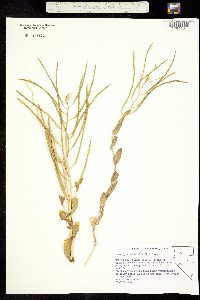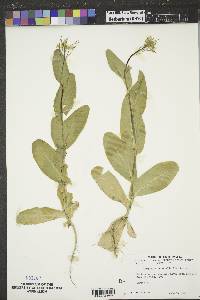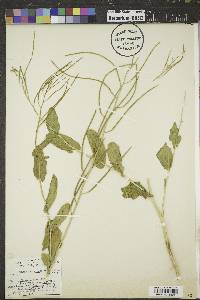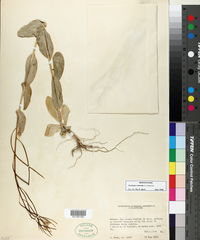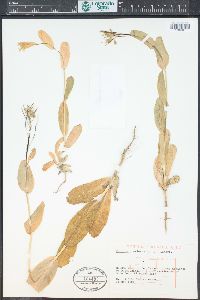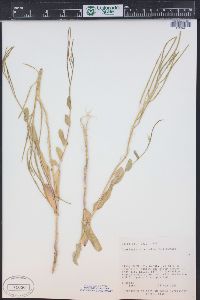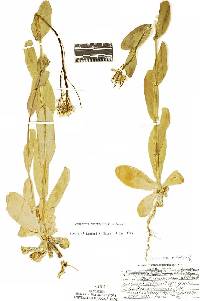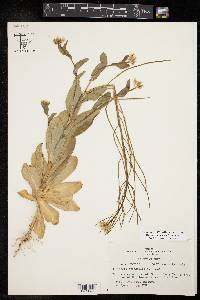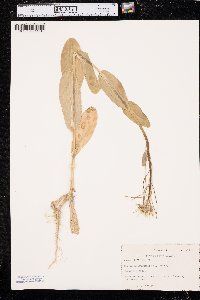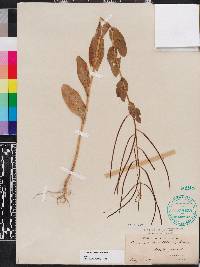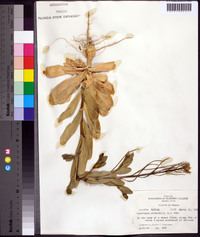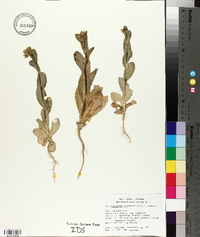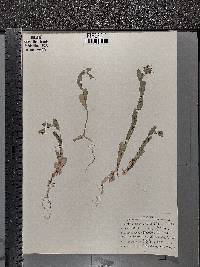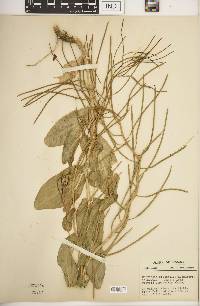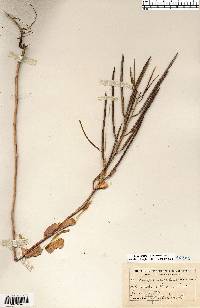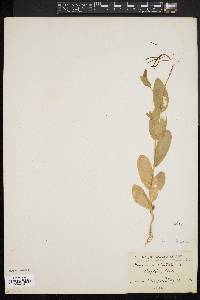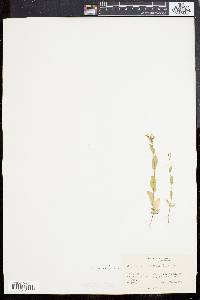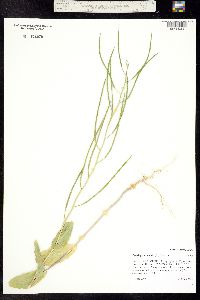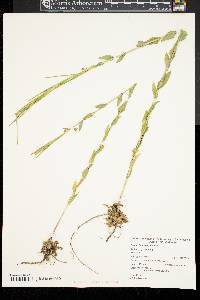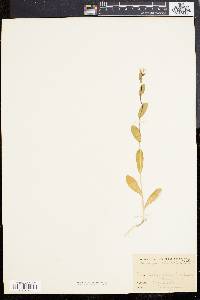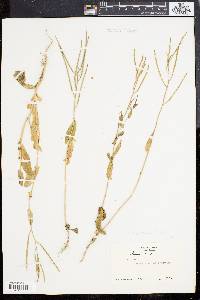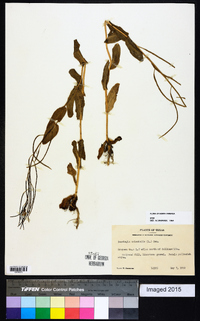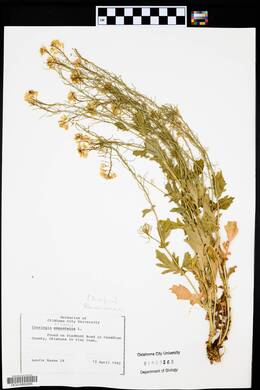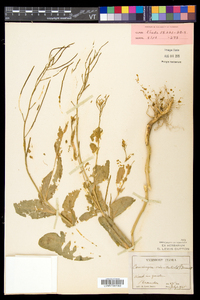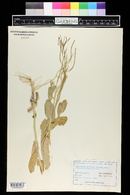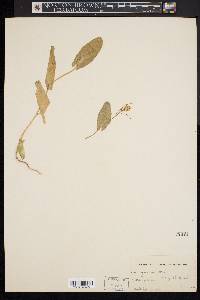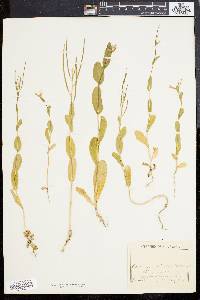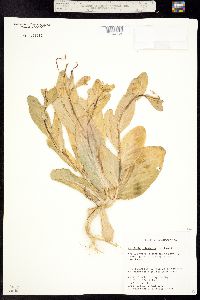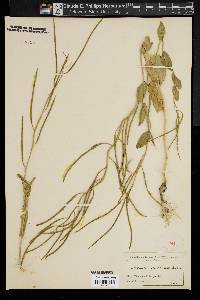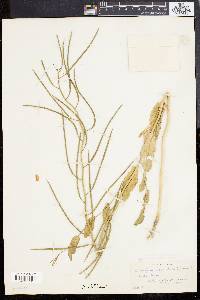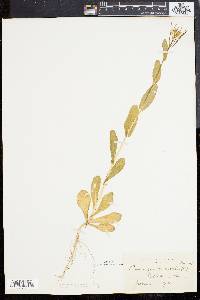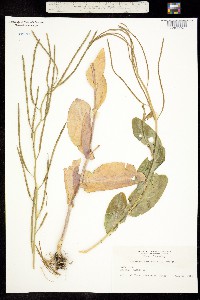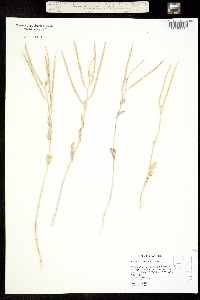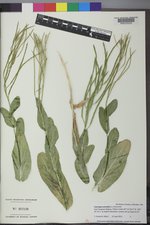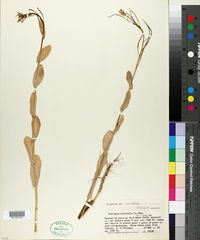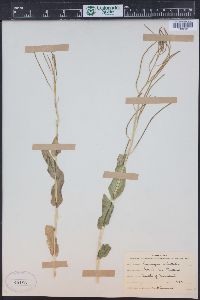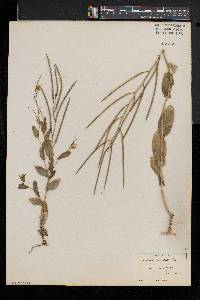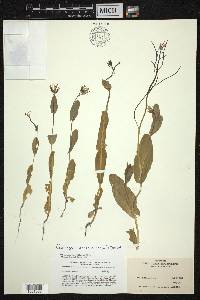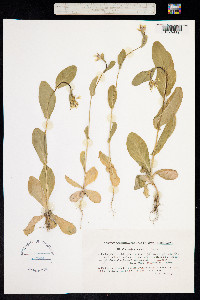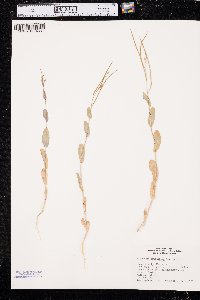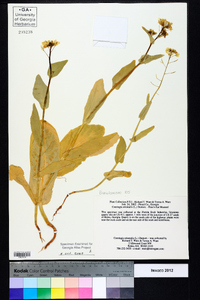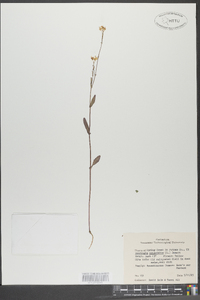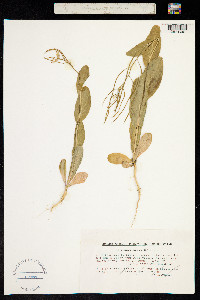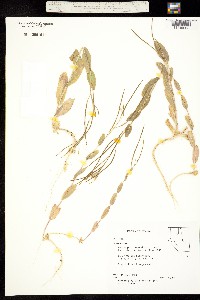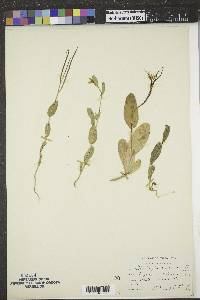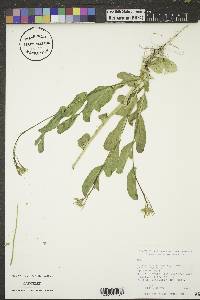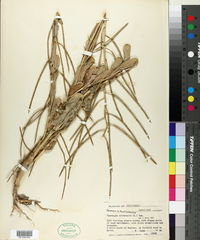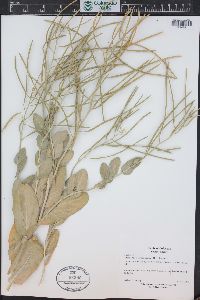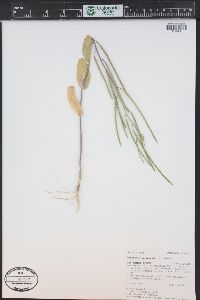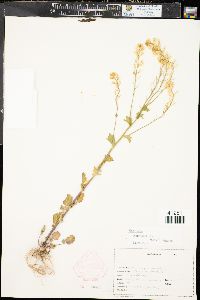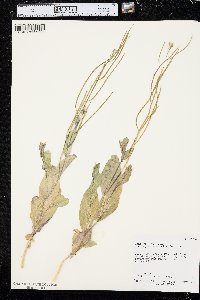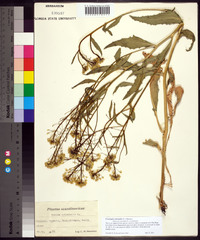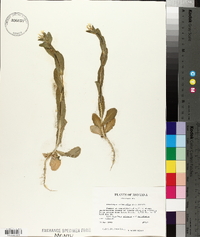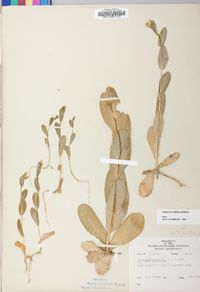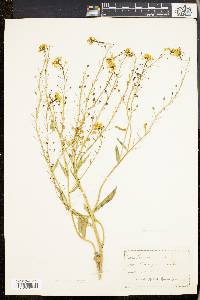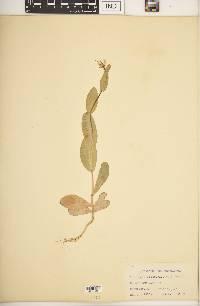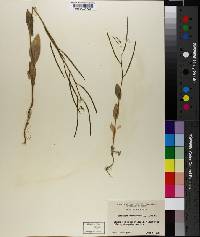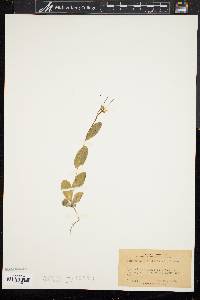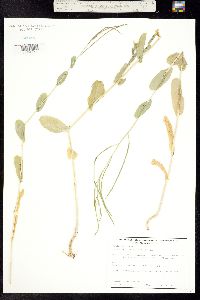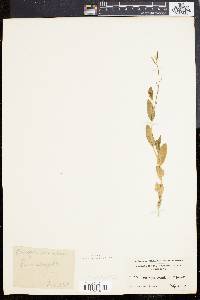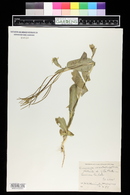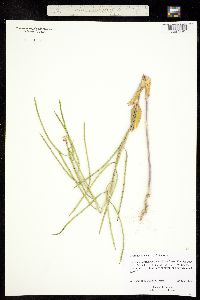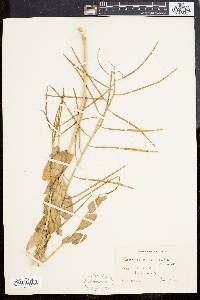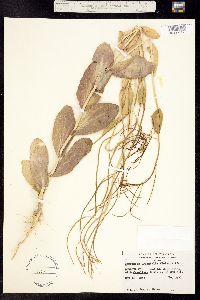
|
|
|
|
Family: Brassicaceae
Hare's-Ear-Mustard, more...hare's ear mustard, haresear mustard, treacle haresear
[Brassica orientalis L., moreCaulanthus annuus M.E. Jones, Erysimum orientale (L.) Mill.] |
Plants sometimes winter annuals. Stems mostly simple, (1-)3-7 dm. Basal leaves: blade (slightly fleshy), pale green, oblanceolate to obovate, 5-9 cm, margins ± entire. Cauline leaves: blade oblong to elliptic or lanceolate, (1-)3-10(-15) cm × (5-)20-25 (-50) mm, base deeply cordate-amplexicaul, apex rounded. Fruiting pedicels ascending, straight or curved-ascending, (8-)10-15(-20) mm. Flowers: sepals 6-8 × 1-1.5 mm, median pair narrower than lateral, apex acute; petals 7-12 × 2-3 mm, base attenuate, claw usually as long as sepal; filaments 5-7 mm; anthers 1.5-2 mm. Fruits ± torulose, strongly 4-angled to ± cylindrical, 1-nerved, keeled, (5-)8-14 cm × 2-2.5 mm; style cylindrical, 0.5-4 mm. Seeds brown, 2-2.9 × 1.2-1.5 mm. 2n = 14. Flowering (Mar in Texas) May-Aug. Cultivated lands, grain fields, disturbed areas, waste places, roadsides, gardens; 0-3500 m; introduced; Alta., B.C., Man., N.B., Nfld. and Labr., N.S., Ont., P.E.I., Que., Sask.; Ala., Alaska, Ariz., Ark., Calif., Colo., Conn., Del., D.C., Fla., Ga., Idaho, Ill., Ind., Iowa, Kans., Ky., La., Maine, Md., Mass., Mich., Minn., Miss., Mo., Mont., Nebr., Nev., N.H., N.J., N.Mex., N.Y., N.C., N.Dak., Ohio, Okla., Oreg., Pa., R.I., S.C., S.Dak., Tenn., Tex., Utah, Vt., Va., Wash., W.Va., Wis., Wyo.; Europe; Asia; introduced also in Mexico, nw Africa, Australia. Conringia orientalis was collected on ballast in New York as early as 1879. It is most abundant in the plains and prairies of both the United States and Canada (I. A. Al-Shehbaz 1985; R. C. Rollins and Al-Shehbaz 1986). In disturbed places, it has penetrated into the native vegetation over a wide area.
Annual herb to 0.8 m tall Flowers: in a dense, branched cluster (raceme), which is borne terminally on a stem. Sepals upright. Petals four, cream-colored to yellowish white, 1 - 1.2 cm long. Stamens six. Fruit: a long, narrow pod (silique), widely spreading, often slightly drooping, 8 - 12 cm long, 2 - 3 mm wide, four-angled. Lower leaves: narrowed to the base. Upper leaves: alternate, clasping, pale, oval to elliptic or oblong, bases heart-shaped, tips broadly rounded. Similar species: No information at this time. Flowering: mid-May to early June Habitat and ecology: Introduced from Europe. Conringia orientalis was once more common in the Chicago Region. It has been found growing near a ditch, in a cultivated field overgrown with weeds, and along a railroad. Look for it along railroads and in disturbed areas. Occurence in the Chicago region: non-native Etymology: Conringia is named after H. Conring (1606-1681), a professor at Helmstadt, Germany. Orientalis means "oriental." Author: The Morton Arboretum Erect annual to 8 dm; lvs pale, the lower narrowed to the base, the upper oval, elliptic, or oblong, broadly rounded above, cordate-clasping, entire; pet ochroleucous, narrowly obovate, 10-12 mm; pedicels and frs widely divergent, the former 1-1.5 cm, the latter 8-12 cm נ2-3 mm, 4-angled; 2n=14. Native of Eurasia, occasionally found as a weed in our range, and more common in nw. U.S. Gleason, Henry A. & Cronquist, Arthur J. 1991. Manual of vascular plants of northeastern United States and adjacent Canada. lxxv + 910 pp. ©The New York Botanical Garden. All rights reserved. Used by permission. From Flora of Indiana (1940) by Charles C. Deam All of my specimens except one are from railroad ballast. It has been reported from seven counties and all who mention its habitat except one say that it was found along railroads. Apparently this species is slow to establish itself in fields and may not become a serious pest. |
This project was made possible in part by the Institute of Museum and Library Services [MG-70-19-0057-19].
Powered by Symbiota



